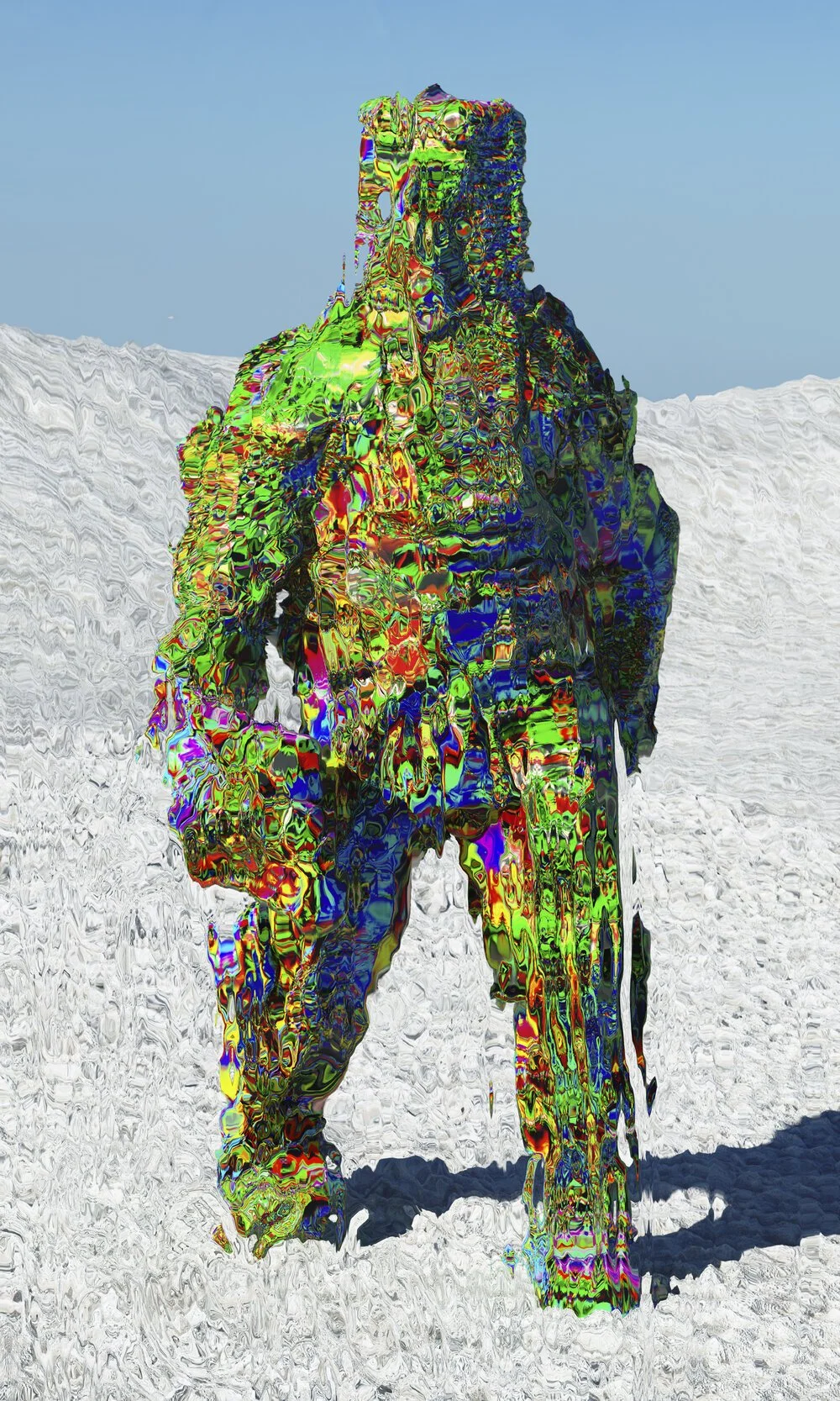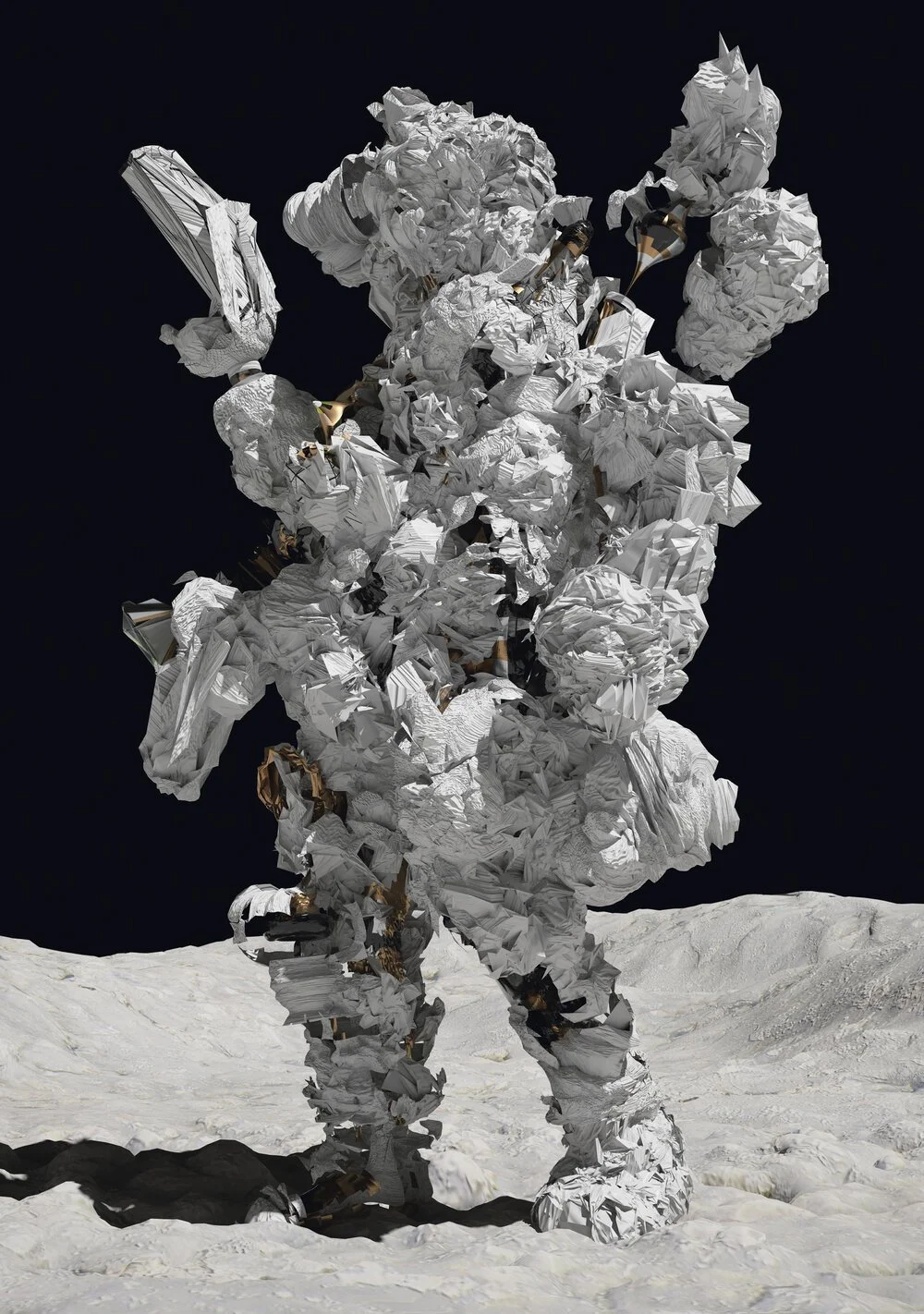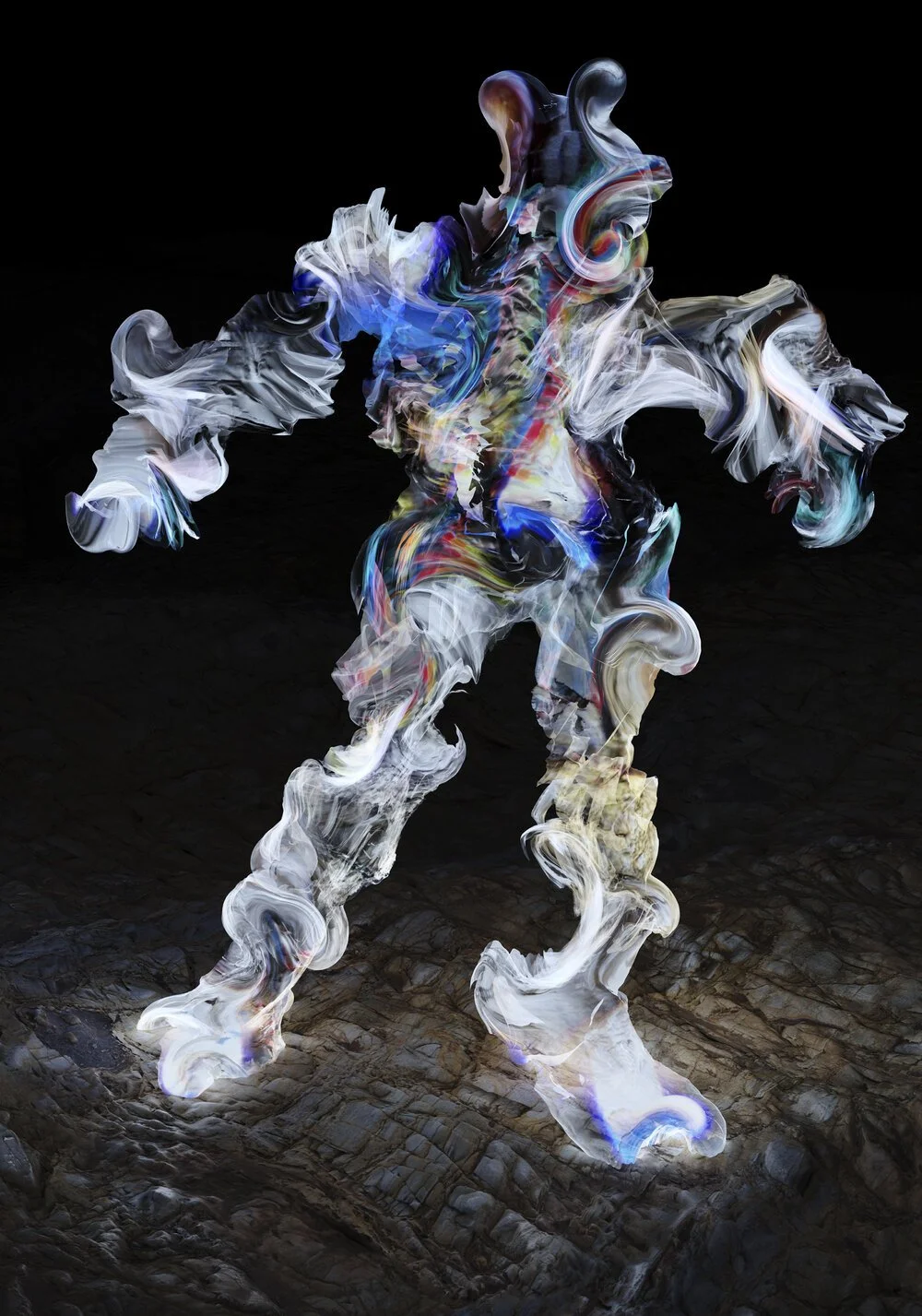From Our Archives: Shamus Clisset: The Future Rendered
Portrait by Andrea Blanch
This interview was originally featured in ISSUE 14 - SCIENCE & TECHNOLOGY.
Interview by Andrea Blanch
Andrea Blanch: Two of your pieces, Mr. Realistic (Keeping America Clean) (2014) and Builder Destroy (Acid God) (2013), depict a person inhabiting a trash covered, post-apocalyptic environment. Where did the idea for this world come from? Is it a version for our own world? Is it an omen for the way we mistreat our environment?
Shamus Clisset: Yeah. When I got into working in 3D, my original approach was to realize that this 3D world was something analogous to our own world – it was this new, undiscovered territory that you’re creating while exploring it. All of this frontier imagery started to come into the earlier work, which was a lot about conquering a frontier in American history, but very much in light of where we’ve ended up and how we’ve conquered it. But, where are we now? We’ve paved it all over. My parents live in Colorado, which has become one of the most suburbanized…
Andrea: Where?
Shamus: The area outside of Denver and Boulder. It’s where I grew up. Back in the 70s and 80s, a lot of people went there to get back to nature, that’s why my parents moved there. In the meantime, it’s become the same suburban wasteland that you see everywhere across the country. The imagery from my earlier work was commenting on that transition, which led towards this post-apocalyptic thing. Keeping America Clean is interesting because the figure in all of my works comes from one figure that evolves from one piece to the next, but I consider him the same character through each iteration. At the beginning, he was that destructor-type character, the explorer. Then, he becomes someone magical who cleans everything up from the destruction he had left in his wake. In a narrative, your mind goes off on tangents. So I might think of something, and then I make a picture that’s based on one idea that I had, and something in that will remind me of a different possibility. Then I’ll go and make a picture that’s almost like the two paths split: here’s the one path taken and the other one. In the 3D world you don’t have to follow any literal narrative; you create a library of different objects and scenarios. Some things from before end up in pieces that come later, other things are hinting at things that are going to come later that I don’t make – it’s all over the place. But all of the ideas are happening simultaneously for me. It just depends on which one I’m working on at the moment, that’s the one that will get finished first.
“In my mind, there’s an element of a weird religious devotion to these devices
and a supernatural connection to them...”
Shamus Clisset. Bambaataa in the Desert (Mirage Version), 2015.
Andrea: It’s totally endless! You have to cut it off in your head.
Shamus: Yeah. Every finalized piece that you see has gone through dozens and dozens, if not hundreds, of iterations before I decide that that’s the final one.
Andrea: You insert yourself into your work in the form of an alias called Fake Shamus. How has Fake Shamus’ personality changed and evolved over the years? Is that what you just said or…
Shamus: Sort of, yes. This character wasn’t necessarily supposed to be me, but he was a way for me to put a character in there and make references to my own history and obsessions. He’s not literally an alter ego, but he’s someone I can play around with in that space. I give him superpowers and create these surreal environments that he can explore.
Shamus Clisset. Astronaut, 2015.
Andrea: What are your own obsessions?
Shamus: Thinking about where we are at in terms of digital media and where that’s gotten us. Last night, I was talking with a friend at the studio about how we all have these supercomputers in our pockets now, in the form of the iPhone. These things can do more processing-wise than computers could do just recently. Yet, what does everyone end up doing with that? No one fully understands it except the people building them, like Steve Jobs. We have all of the technology and potential – anyone can sit down and make amazing things now – but it hasn’t brought us any further. We have no idea how these things actually work, so it almost becomes a magical thing: you just have faith that it does work. In my mind, there’s an element of a weird religious devotion to these devices and a supernatural connection to them, so I’m playing with these ideas of the digital mixed with all this American history, frontier stuff. I’m not the kind of artist that sits down and has a definite concept; every picture is a new thing where I’m just letting things happen.
Andrea: Would you link your work to science in any way?
Shamus: I think it’s less science and more…
Andrea: Technology?
Shamus: There’s a quote by Arthur C. Clarke saying: “Magic is just science that we don’t understand yet.” I’m not obsessed with the technology, I’m more interested in the idea of building something in this 3D world that has no physical presence – it’s just data that has very complicated technical reasons for being the way it is. Underlying that, as a bigger picture, is that idea of working in this nonexistent space.
Find more of this interview in ISSUE 14 - SCIENCE & TECHNOLOGY.
Photo Editor: Nikhita Samala










